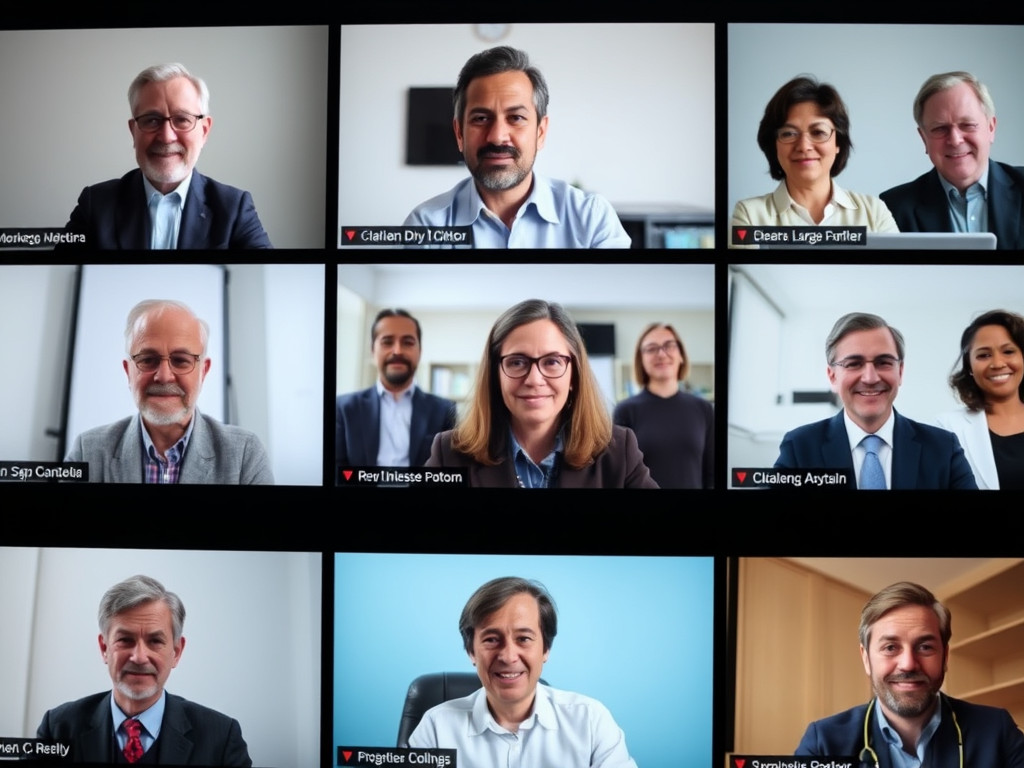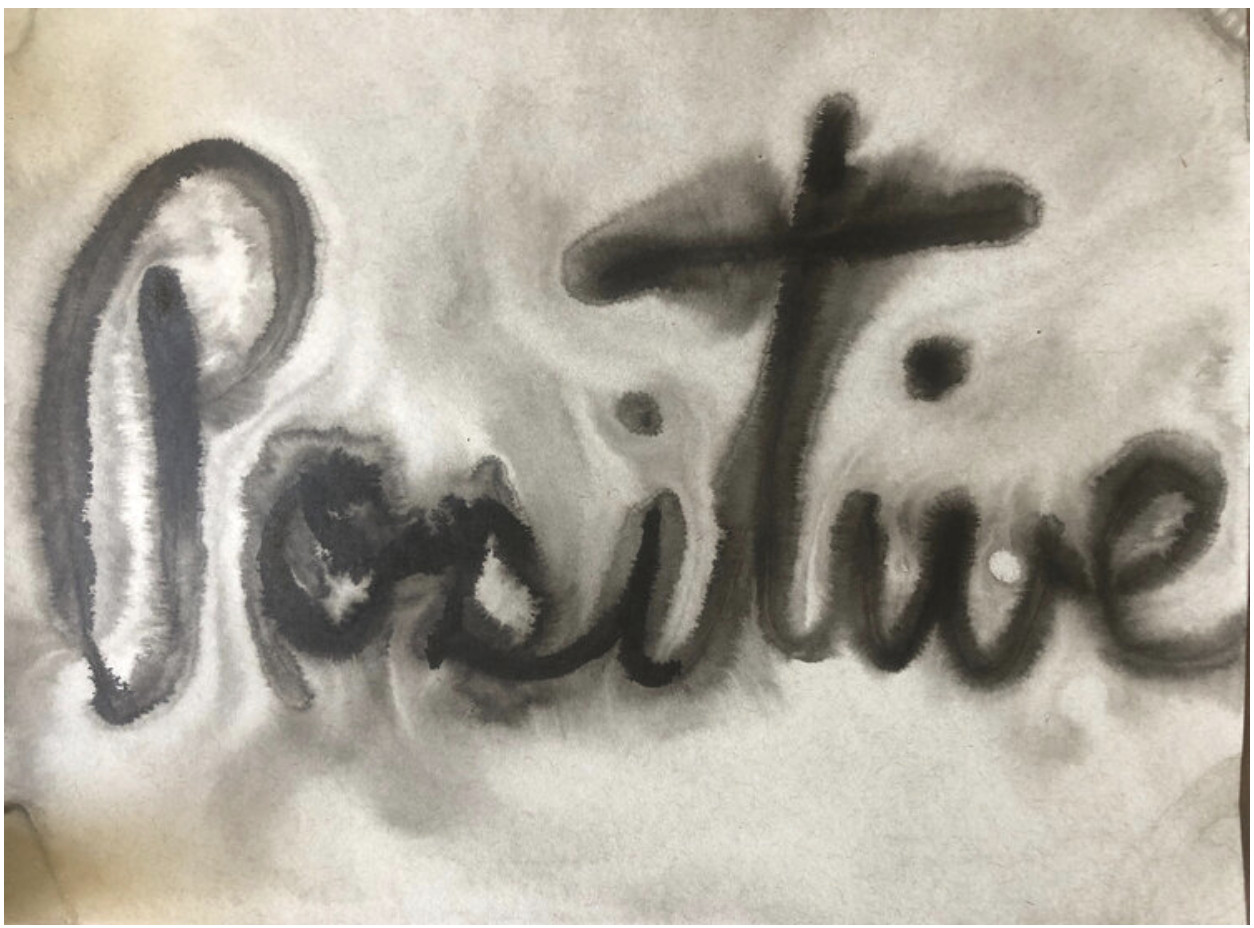Yesterday I attended two zoom meetings. The first was a Town Hall on Title VI and Academic Freedom. It was organized by the Faculty Council at Brooklyn College, CUNY, where I work. Title VI of the Civil Rights Act of 1964 prohibits discrimination based on race, color, or national origin in programs or activities that receive federal funding. Five well-chosen speakers addressed an escalation of Title VI complaints due in large part to its weaponization as a strategy to control discourse about Israel and Palestine on college campuses. We heard from our Provost, the head of our Teaching and Learning Center, representatives from a CUNY-wide and a PSC CUNY union committee on academic freedom, and a civil rights lawyer. I listened. They spoke. We learned. A brief Q and A ended an evening of informative presentations.

While no one smiled in the one-size fits-all mood pictured above, it did feel grounding to have informed and knowledgeable co-workers impart information that clarifies this chilling change. It felt connective to be in a virtual audience with 40 or so colleagues who had made the time and effort to be present. And everyone felt worried about where case law, legal definitions, and administrative reach would go after January. If we smiled, it was for each other. Mostly, our cameras were off and we stewed.
The affordances of said virtual audience lace information acquisition with a sustaining sense of connections that could be activated. Given the state of the interval I am attending to—between election and inauguration—being in this audience felt useful if not really positive.

Later in the evening, I went to a meeting of the collective What Would an HIV Doula Do?
a community of people joined in response to the ongoing AIDS crisis. We understand a doula as someone who holds space during times of transition. We understand HIV as a series of transitions that begin long before being tested, that continue after treatment and beyond. We know that since no one gets HIV alone, no one should have to live with HIV alone. We doula ourselves, each other, institutions and culture. Foundational to our process is asking questions.

I have been a member of this collective for its close-to 10 years of existence. As is true of most members of the loose group, I became truly activated when we began to meet on Zoom beginning quite early in the lockdown phase of the COVID pandemic and continuing until this day. People from all over joined; it was a kind of lifeline. Until then, it had been primarily a small NY city-based group that engaged in conversations and community-based art interventions. The collective transformed because of lockdown and using Zoom. Our meetings became internally sustaining as a place to understand emotional and political experiences, as well as highly productive, instigating an impressive output of publications and actions. In this case, Zoom had and has worked for us like a chemical agent that can hold human need: bonding, explosive, mixing, soothing, changing.
Just so, in last night’s iteration of our learned-Zoom use, we began with a prompt so that all 14 of us spoke. Facilitation was loose and changed hands. Everyone spoke at least once again. Feelings ran deep, most cameras were on, emojis, human faces, and the chat registered affective response. The issues at hand were fundamentally related to the ones at the previous meeting—in this case (among other things), how we would be working, living, doulaing in the next year(s) as threats to the vulnerable in our society (and in our tight-knit group) would increase as legal protections decline.
The affordances of this virtual audience intermix information acquisition with human connection, emotion, and empathy activated in a digital space, and propulsive enough to inspire deep identification and more production. Again, there were no uniform smiles and also nary a red ribbon. And while many of us are HIV-positive, the scary positivity of AI can not picture how we were together, online, creating a sense of realistic belonging and the kind of human connection required to support others in a hard world. This kind of interactive “audience” can only function as a space of this kind of care after intimacies have been produced from learning to know each other across time, and using models for meetings informed by feminist or liberationist strategies.
In this practice on this blog, during the interval, and thinking about ways and means to learn, speak, organize, and stay grounded, I am trying to understand the affordances of the many communication tools, audiences, and meeting structures available.
While we might see a certain softness linking the optimistic AI images of activists and professors and Karen Finley’s ink on paper; and while all three images keep people who are vulnerable to surveillance and attendant punishment safe from view1; there are noteworthy differences across these communication tools that point to the ideas and practices I strive to better understand.
Technologies, platforms, media become apparent, really become what they are, in use. Zoom—what Nishant Shah and I are grappling with as a definitive “pandemic technology” (like AI and everything else we take up to survive, connect, and seek health); and Pato Hebert and I have called “screen as care” in our work on Long COVID—is built for many things, and can be used for others: from surveillance to sustenance, from grieving to feminist praxis. The questions become less: online, off, or hybrid? Virtual or embodied? Lecture or support group? And more: what do we need in a discrete instance of human connection, and how can we better distinguish between and use technologies to equip and sustain us?
- I took screen shots of both Zoom meetings—easy enough—but decided that because of the sensitive nature of the discussions, it didn’t seem wise to include these images here. ↩︎
Comments
2 responses to “the positive (virtual) audience (2): What would an HIV Doula Do?”
[…] of men with whom I have written (about parties, no less), published, and even focused upon right here on this resuscitated blog, risen as it is like a phoenix, or even Jesus (one serious subject of […]
[…] Alex: Thank you for coming from so far away. I am thrilled and honored to have a short conversation with you about the group in which the three of us engage actively. The two of you are the leaders of the Executive Committee of the Professional Staff CUNY (PSC-CUNY) local chapter at Brooklyn College (BC). Thank you for your service. I have two questions. What is the nature of our collaboration, how we come together as union members and as an executive committee for our local chapter, given that there will be a new U.S. President on January 20th? And, who do we think our audience is when we come together to produce actions, words, images, policy, and of course, meetings? […]